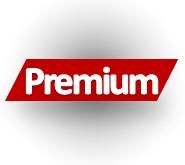International Steel Prices

CRU: U.S. Market Watching for New Capacity and Trade Developments
Written by Estelle Tran
June 18, 2021
By CRU Prices Analyst Estelle Tran
U.S. sheet prices are still trending higher, which has supported further gains in raw materials, slabs and imported steel. Even though CRU HR coil prices have increased 7.4% m/m to $1,655 /s.ton on June 16, market contacts still report a lack of workable offers, especially given lead times into the fourth quarter and network of Section 232 (S232) tariffs and AD/CVD duties.
U.S. buyers have been eagerly seeking offers from Ternium’s new 4.4 Mt/y hot strip mill, but multiple contacts said they have not been able to get quotes. Mexican HR prices rose 4% m/m because of supply tightness and also following strong gains in the U.S. market. Though offers have been sparse, we expect the ramp-up of Ternium’s HSM as well as other imports due to arrive this summer to weigh on steel pricing.
May import licenses for carbon and alloy flat rolled products reached the highest level seen so far this year with 917,000 t, according to Department of Commerce data. U.S. flat rolled imports from Jan-May 2020 totaled 3.23 Mt. Jan-May flat rolled imports in 2021 might reach 3.85 Mt based on May license data and April preliminary import data – or a 19% year-on-year increase. Wide pricing spreads have allowed exporters from countries with a 25% tariff as well as AD duties, such as Turkey (2.73% AD rate), to enter the U.S. market. Buyers licensed 23,000 t of HR coil from Turkey for import in May, for example, at a time when securing supply was more important than the price. We expect imports to remain elevated through the summer, which, along with additional capacity from Ternium, will help to resolve the ongoing supply issues and exert downward pressure on prices.
We are finally starting to see service center inventories grow, though they remain far from normal levels. Data from Steel Market Update, which is part of CRU, showed that service center flat rolled inventories at the end of May reached 45.3 shipping days of supply, up from 41.8 in April. However, this is still down significantly from May 2019’s level of 55.6 days of supply.
For longs, there is a similar dearth of import opportunities. Import offers for low carbon wire rod, for example, are close to domestic prices, however, there are few offers because of strong demand in home markets. U.S. wire rod buyers expect that imports will not surge if the U.S. removed S232 tariffs on the EU, given the strength in European demand. There are expected to be increased imports though this summer, given the supply shortage in the U.S. from regular suppliers as well as more opportunistic suppliers. The U.S. licensed 12,000 t of Indian wire rod for import in June; the last Indian wire rod imports occurred in August 2019.
U.S. and EU Trade Relations Warming
The U.S. and EU agreed to suspend tariffs related to the dispute over subsidies on large civil aircraft for five years. Although the 25% tariffs targeted mostly consumer goods, such as Harley-Davidson motorcycles and cheese, the move represents significant progress in repairing diplomatic relations. On the same day, the White House declared that it would work toward resolving tensions arising from Section 232 (S232) tariffs before the end of the year. The statement said the U.S. and EU would work to “resolve existing differences on measures regarding steel and aluminum” and that the U.S. and Europe would work toward “allowing trade to recover from its 2020 lows and ending the WTO disputes.”
The announcement regarding S232 was expected, given thawing trade tensions – they ceased applying retaliatory tariffs from the civil aircraft dispute in January, and the U.S. suspended retaliatory tariffs in March. We expect the possible removal of 25% S232 steel tariffs applying to the EU could happen sooner than the end of the year, though probably not immediately. The progress made with the EU to remove protectionist measures may be part of a larger trend that we could see with other trading partners.
Brazilian Slab Prices May Have Reached the Top
Brazilian slab exports are expected to increase, as Usiminas restarted its 600kt/y BF#2 this month. The company has been buying merchant slabs, but going forward Brazilian steelmakers will have more opportunity to ship to Mexico because of Ternium’s startup.
For now, slab export prices have been hovering just below the $1,000 /t mark with the last confirmed sale done at $990 /t FOB. Exporters have increased prices alongside higher HR coil prices in the U.S. and still elevated iron ore costs.
Outlook: Supply Starting to Catch Up
Flat rolled steel on order at U.S. service centers fell 3% m/m in May, which was the first decrease this year, according to SMU data. With mills catching up on delayed orders, domestic spot buying opportunities increasing, and imports arriving, we are starting to see a rise in service center intake. With HR coil prices approaching $1,700 /s.ton, some service centers are starting to hear resistance about rising prices, which may be a sign that end-consumer supply has caught up to a point where they can start pushing back on prices. While service center inventories are finding better balance, more imports will be arriving this summer. Increased imports together with additional capacity in North America should cause prices to peak in the near term.
Before prices peak, Brazilian slab prices are expected to reach the milestone $1,000 /t FOB mark before falling alongside HR coil prices in the region. These prices have not been achieved in more competitive markets, such as Europe and Asia, and for the foreseeable future Brazilian slab exports will be focused on the U.S., Mexico and Canada.

Estelle Tran
Read more from Estelle TranLatest in International Steel Prices

US and offshore HRC prices tick lower
The threat of tariffs over the past two months has been a springboard for US prices. But the Section 232 reinstatement on March 13 narrowed the domestic premium over imports on a landed basis.

Domestic CRC prices surge ahead of imports
The price spread between stateside-produced CR and imports reached its widest margin in over a year.

US HR prices rising faster than offshore tags
Hot-rolled (HR) coil prices continued to rally in the US this week, quickly outpacing price gains seen abroad. The result: US hot band prices have grown widely more expensive than imports on a landed basis. The premium US HR tags carry over HR prices abroad now stands at a 14-month high. SMU’s average domestic HR […]

US HR price premium over imports widens
Hot-rolled (HR) coil prices were flat in the US this week, while tags in offshore markets were mostly down.

US HR price premium over imports edges up
The price premium between stateside hot band and landed imports widened slightly this week.
